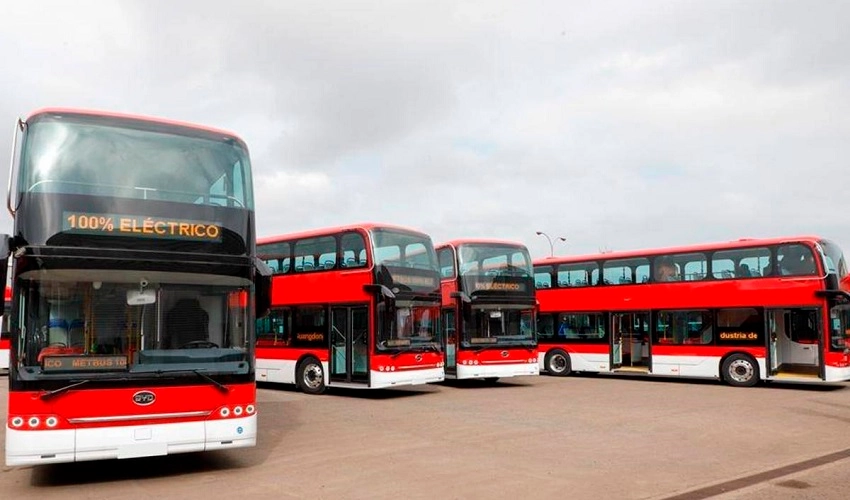Midway through August, the new fleet of 10 double-decker electric buses, similar to those in London, set to join the RED Mobility system was unveiled in Chile.
The company responsible for operating these vehicles is Metbus.
This model has been in operation in Hong Kong for a long time and was adapted for the streets of Santiago, Chile.
Over 200 modifications have been made, primarily to adhere to the standards set by the Ministry of Transport and Telecommunications (MTT) regarding seat type, lighting, signage, bells, handrail colors, and more.
The original plan was to introduce these vehicles for the Santiago Pan American Games in October.
“The plans for the buses haven’t changed. Initially, they will likely serve a route to assist with transporting people for the Pan American Games, and then a similar route will be established for the long term,” said Diego Fuentes, Manager of Planning and Development at Metbus, in an interview with Portal Movilidad Latin America.
The turning radius of these units is short, and significant issues aren’t anticipated, though height might pose a challenge.
In fact, internet users expressed concern about this on various social media platforms.

“We are studying the route’s height, width, and turning radius to ensure the final layout is suitable for this type of bus,” explained Fuentes.
Ultimately, three or four route alternatives are being explored.
The double-decker electric vehicles are at the BYD facilities.
Once they are registered and receive license plates, they will be equipped with GPS, validators, and signage before undergoing a final technical inspection to commence operations.
The company aims to have them in their depot by the end of September.
This service introduces a new alternative among the types of buses operating in the city and for Metbus, given that there are only ten buses in this category, whereas the operator’s major services consist of 50 to 60 units.
The operator already possesses a fleet of 440 single-deck electric units in operation and has had experience in electromobility since 2017.
In fact, alongside the shipment of the double-decker buses, over 350 single-deck units with batteries also arrived.
According to the technical specifications, the BYD B12CO1 bus boasts a range of 280 kilometers and a battery capacity of 348 kW.
The BYD K9, which the company already operates, is equipped with a 276 kW battery.
¡Pronto tendremos a los primeros buses eléctricos de dos pisos de América circulando por las calles de Santiago! 🚍⚡️
— Ministerio de Transportes y Telecomunicaciones (@MTTChile) August 18, 2023
Acá un adelanto de cómo se ven en su interior 👀 pic.twitter.com/n2CgCfwA5q
That is to say, despite its size and weight, its larger battery enables a 10% greater range than the single-deck version of the BYD K9.
The 12-meter fleet is equipped with 80 kW AC slow chargers.
“These double-decker buses deviate a bit from that pattern because they are DC and we can utilize fast charging with twice the power of our slow chargers,” said Fuentes.
“It helps us to test and gain experience with different technologies,” he added.
For the operation, three 180 kW power chargers were installed in collaboration with a partner, Enel X. “It might sound limited, but it’s perfect for the ten buses,” explained Fuentes.
Metbus Embraces More Technologies
The company feels that these double-decker vehicles mark the culmination of their effort to find a better bus for Santiago.
“We have demonstrated that the company can efficiently scale the number of buses and maintain the service standard while transitioning to an electric propulsion fleet,” said Fuentes.
“We hope these vehicles will open new doors that allow us to continue electrifying our fleet,” he added.
However, there are still diesel and articulated buses that are fulfilling their lifespan and need to be renewed.
“There are more alternatives to be explored, both in Santiago and in Latin America,” Fuentes asserts.
The Manager of Planning and Development acknowledges that it’s “fantastic for passengers” that with these new units, out of nearly 100 passengers carried, 70 can have a seat.






